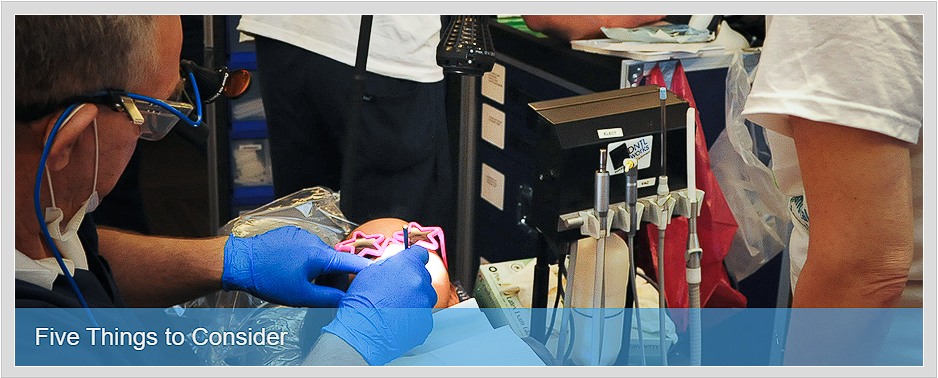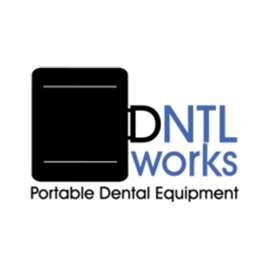
Five Things to Consider
Share
 1. Portability
1. Portability
Weight, compactness and ease of set-up play a big role in portable equipment. To be truly useful, a delivery unit must contain its own air compressor, vacuum, water and waste system, as well as all the components necessary to operate handpieces, syringes, saliva ejectors and high volume evacuation. DNTLworks operatories are designed with (1) weight targets of less than 50 lbs. per component, (2) size dimensions less than three cubic feet per component, and (3) set-up times of three minutes or less. These design characteristics assure the dentist that the equipment will be light enough for convenient transport and easily fit in a automobile or van.
3. Noise Reduction
Whenever compressed air is used to run handpieces, noise reduction becomes a significant issue. Practicing in nursing homes, hospitals, or private homes require quiet environments, not to mention the low noise convenience to the practitioner. DNTLworks units are the quietest on the market. Maximum decibel ratings for DNTLworks operatories used n these environments are 5-dB - with our top-of-the-line Portable II running at a whisper 40dB.
4. Asepsis Design
5. Utility/Productivity
How does the equipment design promote or hinder productivity? DNTLworks equipment has been improved over the years through actual user suggestions and surveys. Vacuum systems were significantly improved with the change from air venturi systems to separate vacuum pumps. Waste disposal times were significantly shortened with the addition of automatic waste flushing pumps. "Four-handed" operation capability significantly increased the amount of patients a practitioner could service and bill. Utility and productivity considerations are the hallmark of DNTLworks products.
